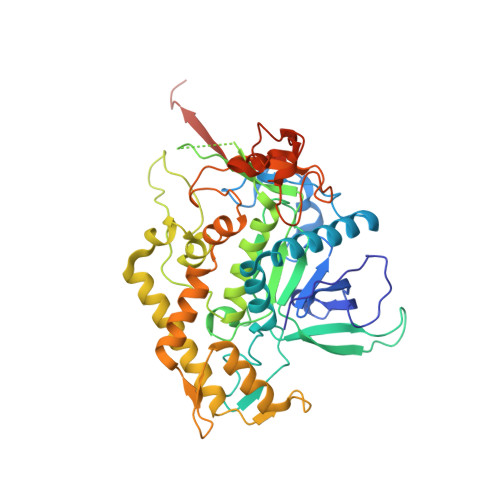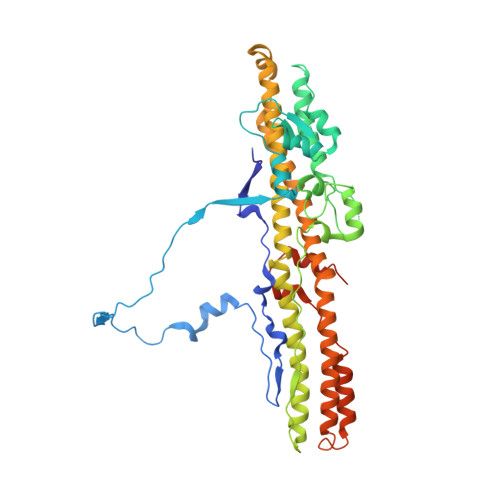Structure and Activity of a Functional Derivative of Clostridium Botulinum Neurotoxin B.
Masuyer, G., Beard, M., Cadd, V.A., Chaddock, J.A., Acharya, K.R.(2011) J Struct Biol 174: 52
- PubMed: 21078393
- DOI: https://doi.org/10.1016/j.jsb.2010.11.010
- Primary Citation of Related Structures:
2XHL - PubMed Abstract:
Botulinum neurotoxins (BoNTs) cause flaccid paralysis by inhibiting neurotransmission at cholinergic nerve terminals. BoNTs consist of three essential domains for toxicity: the cell binding domain (Hc), the translocation domain (Hn) and the catalytic domain (LC). A functional derivative (LHn) of the parent neurotoxin B composed of Hn and LC domains was recombinantly produced and characterised. LHn/B crystallographic structure at 2.8Å resolution is reported. The catalytic activity of LHn/B towards recombinant human VAMP was analysed by substrate cleavage assay and showed a higher specificity for VAMP-1, -2 compared to VAMP-3. LHn/B also showed measurable activity in living spinal cord neurons. Despite lacking the Hc (cell-targeting) domain, LHn/B retained the capacity to internalize and cleave intracellular VAMP-1 and -2 when added to the cells at high concentration. These activities of the LHn/B fragment demonstrate the utility of engineered botulinum neurotoxin fragments as analytical tools to study the mechanisms of action of BoNT neurotoxins and of SNARE proteins.
Organizational Affiliation:
Department of Biology and Biochemistry, University of Bath, Claverton Down, Bath BA2 7AY, United Kingdom.
















